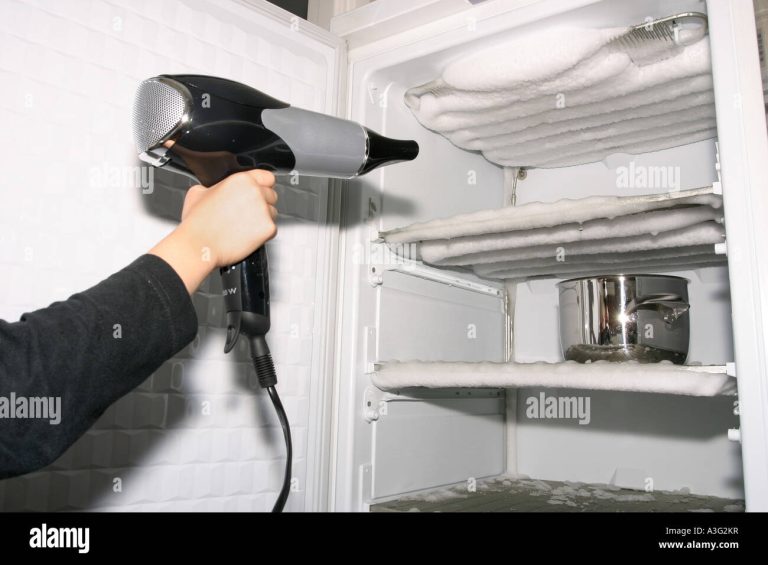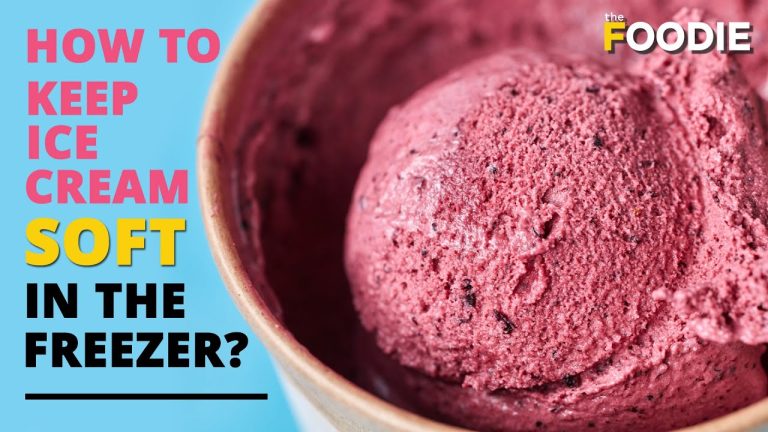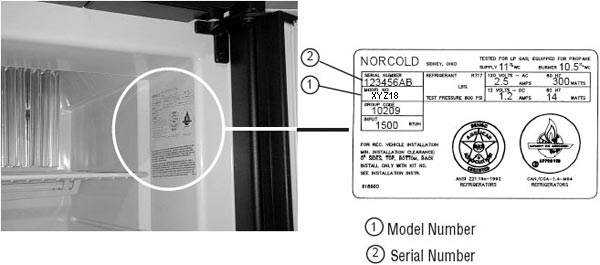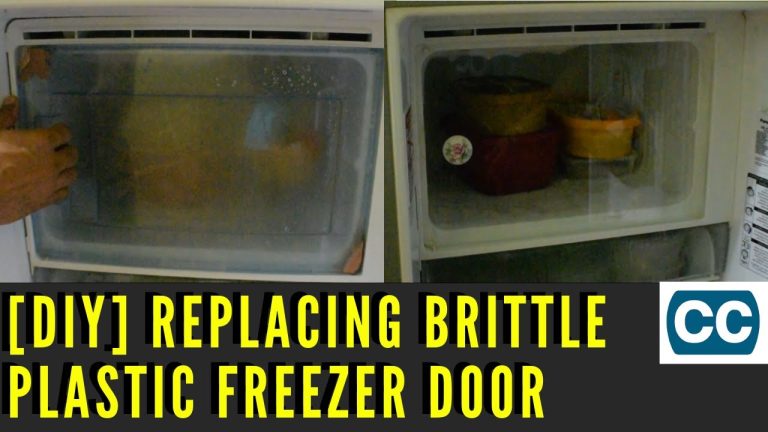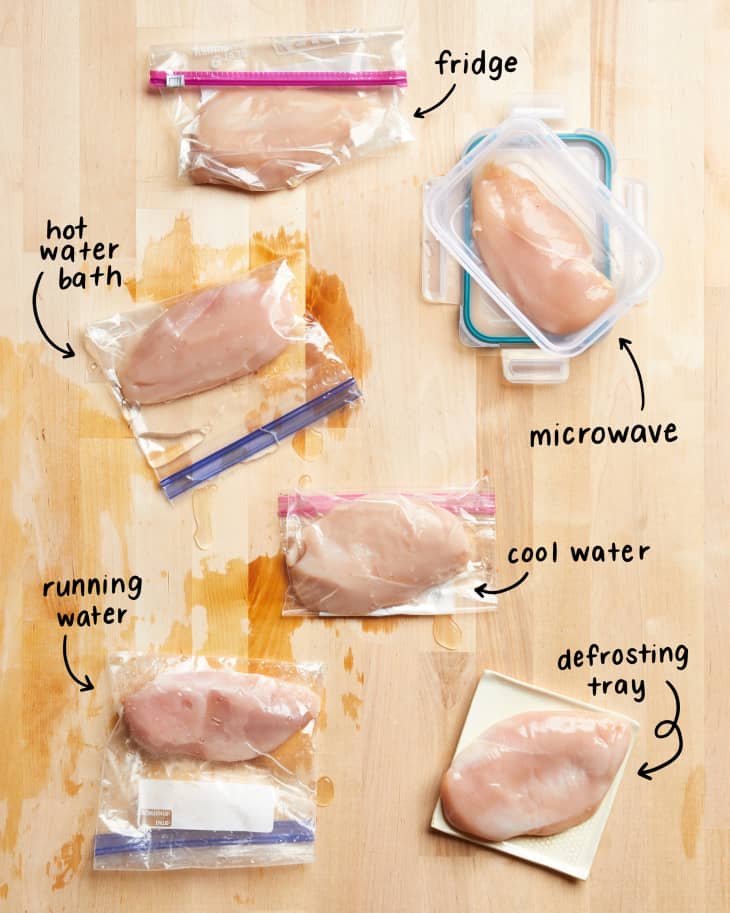Snow in your freezer often results from high humidity and poor door seals. Condensation freezes, creating frost or snow.
Experiencing snow in your freezer can be puzzling and frustrating. This common issue typically arises from excess moisture or a faulty seal. As warm air enters the freezer, it brings humidity. When that air cools, it condenses and freezes, leading to the snow-like buildup.
Ignoring this problem can hinder the appliance’s efficiency and affect food quality. Regular maintenance, such as checking door seals and defrosting, can help prevent this issue. Understanding the causes of snow buildup allows you to take action and keep your freezer running smoothly. Stay proactive to maintain optimal conditions for your frozen foods.
The Chilling Reality Of Freezer Frost
Frost in your freezer happens due to humidity and temperature changes. Warm air enters the freezer when the door opens. This air cools quickly, forming water droplets. These droplets freeze, creating snow.
Several factors contribute to freezer snow:
- Frequent Door Openings: Opening the door allows warm air to enter.
- Poor Seal: A damaged seal lets in moisture and warm air.
- Improper Storage: Storing hot food can increase humidity inside.
- High Humidity: Humid environments lead to more frost buildup.
Credit: www.reddit.com
Impact Of Frost Accumulation
Frost accumulation can harm your food quality. Ice crystals form on food surfaces. This can cause freezer burn, making the food taste bad. Quality loss occurs due to moisture loss. Frozen fruits and vegetables may become mushy and unappetizing.
Increased frost also leads to higher energy consumption. The freezer works harder to maintain cold temperatures. This can raise your electric bill significantly. Regular cleaning helps reduce frost buildup and keeps your freezer efficient.
| Impact | Effects |
|---|---|
| Food Quality | Freezer burn and moisture loss |
| Energy Use | Higher electric bills |
Common Misconceptions About Freezer Frost
Many people think that frost means their freezer is broken. This is not true. Frost can form from moisture in the air. When warm air enters, it can freeze. This happens during door openings.
Another myth is that frost means food is spoiled. In reality, frost does not harm food. It may affect texture but does not make food unsafe.
Some believe frost means the freezer is not cold enough. A good freezer can still have frost. As long as the temperature is correct, frost is not a problem.
Understanding these misconceptions helps maintain a healthy freezer. Keep the door closed as much as possible. This reduces frost buildup and keeps your food fresh.

Credit: www.yellowpages.ca
Preventive Measures To Avoid Frost
To prevent snow buildup in your freezer, use proper packing techniques. Keep food in airtight containers. This stops moisture from escaping. Avoid overpacking the freezer. Leave space for air to flow.
Maintaining optimal temperature settings is key. Set your freezer to 0°F (-18°C). This helps keep frost away. Regularly check the temperature with a thermometer. A stable temperature keeps your food fresh and reduces ice.
Regular Maintenance Is Key
Regular maintenance helps keep your freezer running well. A good cleaning schedule can prevent snow buildup. Aim to clean your freezer every three months. This keeps frost at bay and ensures efficient operation.
Essential tools for defrosting include a plastic scraper and towels. These tools help you safely remove ice and snow. Use a bucket to catch water during the defrosting process. Always unplug your freezer before starting.
Check the drainage holes. Keeping them clear helps avoid water buildup. A fan can help circulate air and reduce frost. Regular checks lead to a cleaner and more efficient freezer.

Credit: www.youtube.com
Troubleshooting Freezer Frost Issues
Snow in your freezer can be annoying. It often means there are problems with your freezer. Common issues include poor door seals, high humidity, or a malfunctioning defrost system.
Check the door seals first. If they are damaged, warm air enters. This causes excess frost to form. Next, consider the humidity levels in your kitchen. High humidity can lead to frost buildup.
If these fixes don’t work, it might be time to call a professional. They can check for serious issues like a faulty thermostat or a broken fan. Regular maintenance helps prevent frost problems in the future.
Innovations In Frost-free Technology
Modern freezers use advanced technology to prevent frost buildup. New models feature frost-free systems that circulate air evenly. This keeps food fresh while avoiding ice formation. Sensors detect temperature changes and adjust accordingly.
Some top brands now offer self-defrosting options. These save time and energy by melting frost automatically. Energy-efficient designs also help reduce electricity costs.
| Feature | Benefit |
|---|---|
| Frost-Free Technology | Prevents ice buildup and saves space |
| Self-Defrosting | Reduces manual defrosting tasks |
| Energy Efficiency | Lowers electricity bills and environmental impact |
Eco-friendly Tips For Freezer Use
Using a freezer wisely can help save energy. Keep the freezer full to maintain cold air. A full freezer uses less energy than an empty one. Regularly check the temperature. It should be at 0°F or below for best performance.
Seal any gaps in the door. This prevents cold air from escaping. Clean the coils at the back to ensure proper airflow. A clean freezer runs more efficiently and saves energy.
| Tip | Description |
|---|---|
| Keep it Full | A full freezer stays cold longer, using less energy. |
| Check Temperature | Keep the freezer at 0°F or below for optimal performance. |
| Seal Gaps | Ensure the door closes tightly to prevent cold air loss. |
| Clean Coils | Regular cleaning boosts efficiency and reduces energy use. |
Frequently Asked Questions
How Do I Fix Snow In My Freezer?
To fix snow in your freezer, first unplug the appliance. Remove all food and let the ice melt. Clean the interior with warm water and a cloth. Check the door seal for leaks. Plug the freezer back in and monitor the temperature regularly.
Why Is There Shaved Ice In My Freezer?
Shaved ice in your freezer is likely leftovers from a party or a treat you prepared. It’s a refreshing snack for hot days. Store it in an airtight container to maintain texture and flavor. Enjoy it later with your favorite syrups or toppings for a quick, delicious dessert.
Why Does It Look Like A Blizzard In My Freezer?
A blizzard-like appearance in your freezer usually indicates frost buildup. This occurs due to warm air entering when the door opens. High humidity can also contribute to excessive frost. Regularly defrosting and ensuring a proper seal can help minimize this issue.
Is Freezer Snow Safe To Eat?
Freezer snow, or frost, is generally safe to eat. It forms from moisture and doesn’t contain harmful substances. However, it’s best to avoid eating snow that may have absorbed contaminants or chemicals. Always ensure it’s clean and fresh before consuming.
Enjoy your snow safely!
Conclusion
Snow in your freezer can be frustrating. It often signals a problem that needs addressing. By understanding its causes, you can prevent it from happening again. Regular maintenance and checking seals are key. Keep your freezer functioning well, and enjoy hassle-free storage.
A little attention goes a long way in avoiding snowy surprises.
